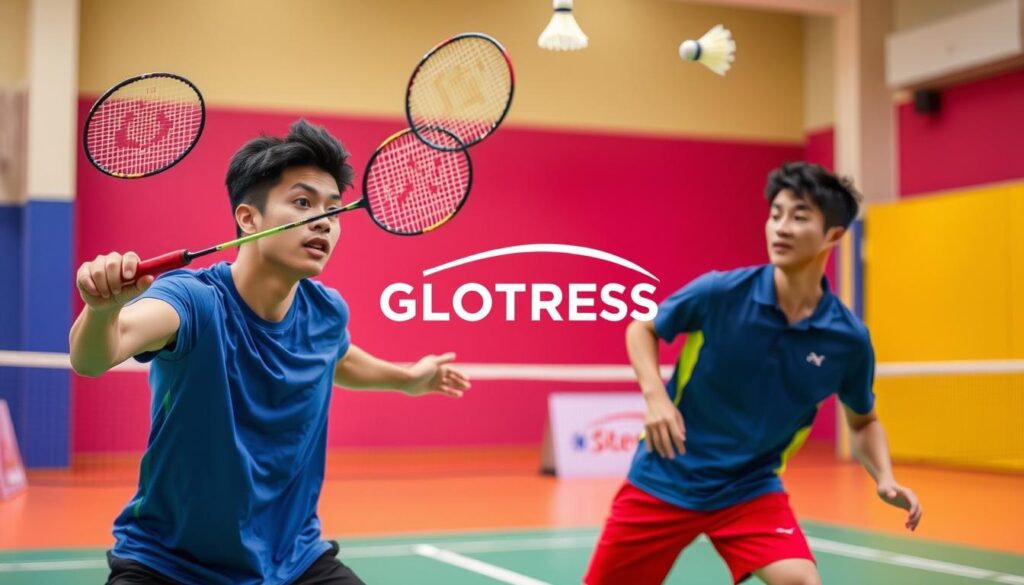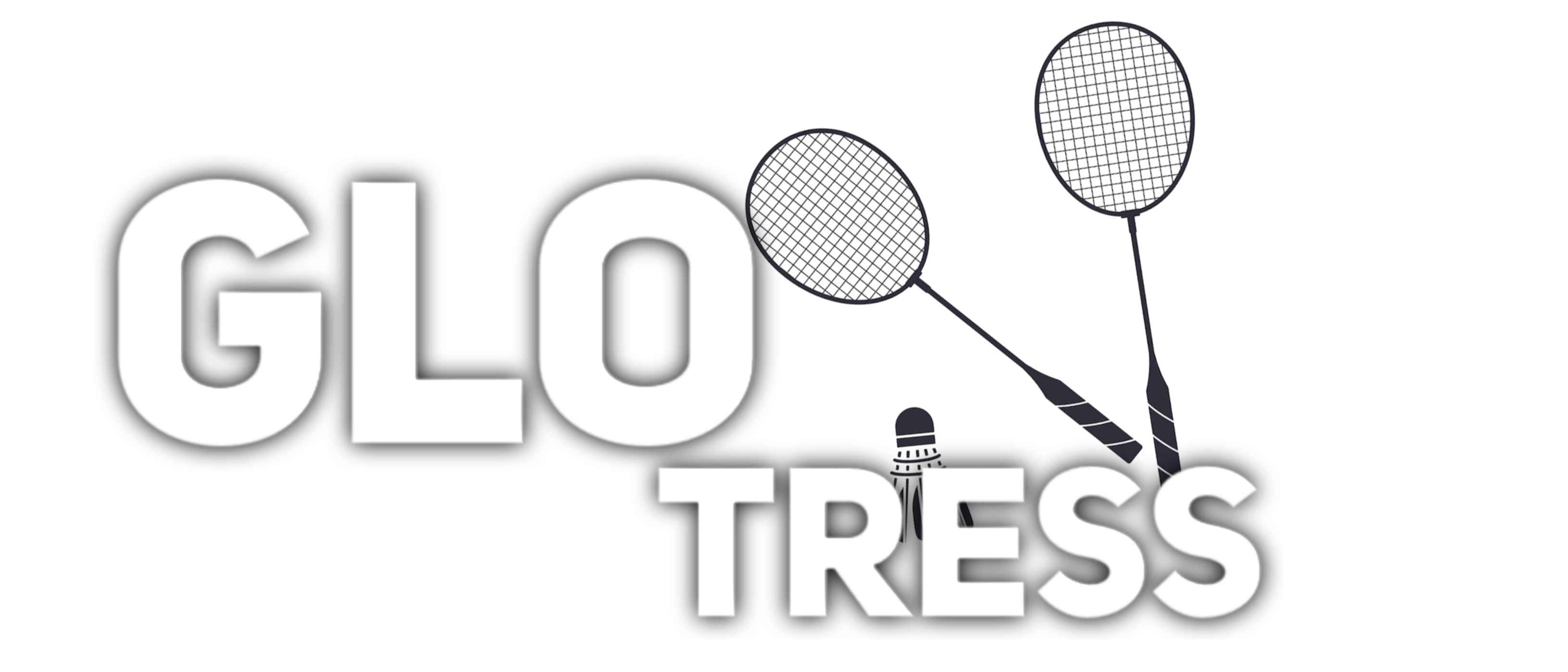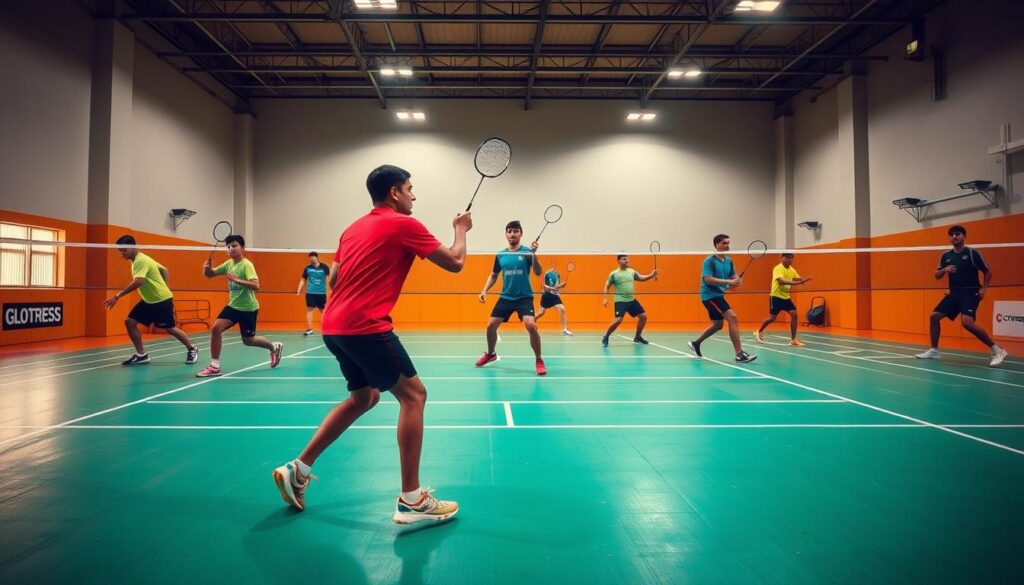Sports like badminton require endurance, dexterity, and patience. Whether you’re new or have played for a while, you must do badminton training drills. You can practice and sharpen your skills with these drills to become a great player.
It is insufficient to only play games. To improve, badminton training is required. The best badminton training drills to improve your game are provided in this post
More players do 8–12 drills a day in Asia than in Europe. Drills are important to observe and practice throughout Europe, particularly in France. To get better, it’s recommended to play against a variety of players
In badminton, mixed-hand doubles pairs are viewed as more dangerous and adept attackers.
It’s a good idea to mix up your training with high-impact sports like running and low-impact activities like cycling. Having adaptable training plans makes it easier to deal with unforeseen problems. In high-level competitions, it may be necessary to switch up your tactics every five or even every point.
For continuous badminton improvement, it’s a good idea to maintain a training record to monitor your advancement.
Mid-Trial Drives
In badminton, driving back and forth is an essential first step. Even pros begin with this maneuver. Teamwork is equally as important for midcourt drives as raw power. Hit the shuttle in front of you with a brief swing as your goal.
Encouraging Mid-Court Drives
Midcourt drives improve your timing, reaction time, and shot power. They also increase the speed of your racket. To become proficient at advanced shots, these drills are essential.
Proper Technique and Focus Areas
Timing when you land and strike with your feet is crucial. This guarantees that your body can adapt. It’s more difficult to control your body when you hit before landing.
Controlling the shuttle is facilitated by a short swing during the backhand drive. To confuse your opponent, go for the tramlines or the middle.
“Midcourt drives should be done with a level of cooperation, not just trying to hit it as hard as you can.”
Mid-Court and Rear Control
Being able to dominate the back and middle of the court is essential for a well-rounded badminton player. This exercise aids in maintaining control over these regions. It’s essential for both attacking and defending.
On one side of the court, a feeder will be situated next to the service line. They will attempt shots from the mid- and back-court areas. It’s your responsibility to regulate the return of these shots without overstriking the shuttle. The goal of this exercise is to improve your technique and footwork by controlling your power.
- Shots will be made by the feeder to your side of the court’s mid-court and rear-court zones.
- Your objective is to return every shot with control, putting more emphasis on keeping a steady, precise stroke than on hitting the shuttle with as much force as you can.
- It’s important to pay special attention to your footwork and positioning so that you can perform your returns with speed and ease.
- To make sure you’re producing the appropriate amount of power and control, pay close attention to your grip, racket setup, and swing mechanics.
- Take turns playing as the feeder to give both players a chance to learn what it takes to keep mid- and rear-court control.
This badminton rear and midcourt control drill will help you dominate the court. It will improve your game strategy and make your badminton rear court player drills more effective.
“This drill has been a game-changer for my badminton game. I’ve noticed a significant improvement in my ability to control the rear and mid-court areas, which has translated to better positioning, shot selection, and overall court coverage.”
Push Downs
The push down drill is great for improving your defensive skills in badminton. It makes both the feeder and the worker focus on low, controlled movements. This is key for singles and doubles players. Let’s look at how to do this important training exercise.
Instructions for the Feeder
The feeder stands on one half of the court, near the service line. They aim to hit all shots above the net. This makes the shuttle go down and puts pressure on the worker.
This setup makes the worker stay deep and hit controlled, low shots.
Instructions for the Worker
As the worker, you need to move sideways and hit defensive shots. If you move too close to the service line, the feeder can hit the shuttle over your head. This tells you to stay back.
Keep your legs bent to move quickly and powerfully. Standing straight can slow you down and make it harder to change direction.
The push down drill is key for better badminton defensive drills and mastering the badminton push down drill. By focusing on low, controlled shots and staying strong in defense, you’ll get better. You’ll become a more skilled badminton player.

Pressure Defense
Improving your defensive skills is key in badminton. The pressure defense drill helps sharpen your reactions and off-the-body defense. A feeder hits aggressively down the court towards a defender in a ready stance, racket in a backhand grip.
This drill is great for doubles players but singles can also practice defensive reactions and positioning. The feeder hits aggressively down the court towards a defender in a ready stance, racket in a backhand grip.
Mastering the pressure defense drill requires quick shot reading and response. The faster you react, the better you’ll handle high-pressure situations. Regular practice builds the muscle memory and instincts needed for effective defense.
To start the drill, split the court in half. Place the feeder and defender on opposite sides. The feeder stands at the net, ready to hit powerful shots down the court. The defender stands ready to defend against these attacks.
Timing is key in this drill. The defender must quickly move to get into position. The feeder should mix up shot placement and pace, keeping the defender on their toes. Regular practice enhances reflexes and court awareness for high-pressure situations.
| Drill Level | Duration per Exercise | Rest Period |
|---|---|---|
| Level 1 | 30 seconds | 15 seconds |
| Level 2 | 45 seconds | 15 seconds |
| Level 3 | 1 minute 15 seconds | 15 seconds |
Take a 2-3 minute rest between circuits to recover. Hongyan suggests using music to make training more engaging and motivating.
“Practicing against different players is key for improvement in badminton. It helps players intuitively execute various shots.”
Incorporating the pressure defense drill into your training sharpens your reflexes and defensive skills. It’s essential for excelling in intense badminton matches. This drill is a vital part of any comprehensive badminton training program.
Smash and Lay-Off
This badminton training drill focuses on perfecting the badminton smash and lay-off. It improves your ability to hit powerful smashes. It also works on the mid-court movements that are key to success in badminton.
Focus Areas
The main areas to work on in this drill are:
- Smash Timing: Timing your smashes well is vital in badminton. This drill helps you get better at it.
- Movement Patterns: It also improves your footwork and movement. You’ll move from the back to the mid-court and back, just like in a game.
Variations
This badminton smash and lay-off drill has two versions:
- Half-Court Variation: The feeder and worker play in a half-court. The feeder lifts the shuttle high, and the worker smashes. Then, the feeder plays a half-drive or push into the mid-court. The worker lays off the shuttle to the service line, and the cycle starts again.
- Full-Court Variation: Here, the feeder lifts the shuttle cross-court, and the worker smashes. The feeder then moves cross-court to return the smash. This version is more challenging because it requires more movement from the feeder.
Both versions help improve your badminton smash timing drills. They also enhance your court movement and positioning.

“Mastering the badminton smash and lay-off drill is a game-changer. It’s not just about the power of the smash, but the precision and footwork that make all the difference.”
Badminton training drills
Finding fun and effective badminton drills can be tough. But mixing up your drills can make practice more fun and improve your skills. It helps you work on different parts of your game.
Shuttle juggling is a great drill. One player tries to keep a shuttlecock aloft with precise hits. It boosts hand-eye coordination, racket control, and focus.
- Net Singles: Two players hit the shuttlecock back and forth, focusing on precise shots near the net.
- Tramline Singles: Similar to Net Singles, but players are along the tramlines, working on court coverage and movement.
- Bucket Drill: A player tries to hit the shuttlecock into a bucket or target, improving accuracy and power control.
The Shuttle Tube Smash Accuracy Drill is a tough one. Two players play, with one feeding the shuttlecock and the other smashing it through a tube or target. It sharpens smash technique and precision.
| Drill Name | Player Count | Key Focus Areas |
|---|---|---|
| King of the Court | 3 or more | Positioning, shot selection, decision-making |
| Two Vs. One Offense Drill | 3 | Teamwork, communication, court awareness |
| 6-Corner Shuttle Run Race | 2 | Footwork, agility, speed |
Adding a mix of badminton training drills and fun badminton drills to your practice makes your game better. It keeps the game fun and engaging.
Net T’s
Badminton players looking to improve their net skills should try the Net T’s drill. It’s a fast-paced exercise that tests your footwork, grip changes, and court awareness. You’ll need to quickly move and change your grip to keep up with the game.
Key Points
Moving quickly and lightly is key in the Net T’s drill. This lets you adjust your position fast and react to shots quickly. Also, keep your racket in front and your grip relaxed for smooth grip changes.
This drill focuses on player-to-player interaction, unlike some other drills. It’s great for doubles players, helping them improve their reflexes and teamwork. You’ll learn to anticipate and work together with your partner.
- Quick, light footwork to enable constant adjustments
- Maintaining a relaxed grip for efficient grip changes
- Keeping the racket out in front for better reach and reaction time
- Emphasis on player-to-player interaction and coordination
Adding the badminton net t drill and badminton net skills drills to your training will boost your net game. This exercise is tough, both physically and mentally. It helps you develop the skills needed to shine at the net.
Serve and Return
Mastering the serve and return is key in badminton. It sets the rally’s tone. This drill involves one player serving and the other returning. Players should practice various serves and returns, focusing on shot quality.
Having different serve options is crucial. This drill boosts confidence before a match. It ensures you can hit quality shots right away, putting pressure on your opponent.
Badminton Serving Drills
Effective badminton serving drills are vital. They help players develop a consistent and versatile serve. Here are drills to improve your serve:
- Serve and Move: Serve, then quickly move to a new spot on the court. Get ready to receive the return.
- Serve Placement: Hit serves to different court areas. Try corners or the middle to challenge your opponent.
- Serve Variety: Try different serve types. Use high, low, flat, or jump serves to keep your opponent guessing.
Badminton Return Drills
Strong return skills are as important as serving. Here are drills to improve your returns:
- Return and Recover: Return the serve, then quickly move back to the center. Get ready for the next shot.
- Return Placement: Aim to return serves to different areas. This challenges your opponent’s positioning.
- Return Variety: Practice various return shots. Use drives, drops, and lifts to keep your opponent off balance.
By doing these badminton serve and return drills, you’ll control the rally’s pace and direction. This gives you an edge over your opponents.
“Sportplan has helped reignite my enthusiasm for coaching, and I’ve seen visible improvements in my players’ skills and performance.”
Conclusion
Getting better at badminton is more than just playing games. Adding fun and challenging drills to your weekly practice can really boost your skills. These drills improve your footwork, smashes, and accuracy.
Consistency and enjoying the training are key. You might find a new favorite drill! Focus on technique, endurance, and mental prep to improve your game. Experiment with different drills to match your goals and style.
Drills are crucial for improving in badminton. They help you develop the physical and mental skills needed to excel. With regular practice and a willingness to try new drills, you’ll become a more confident player.

